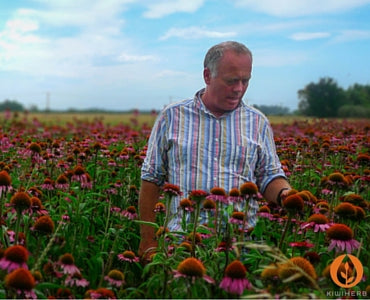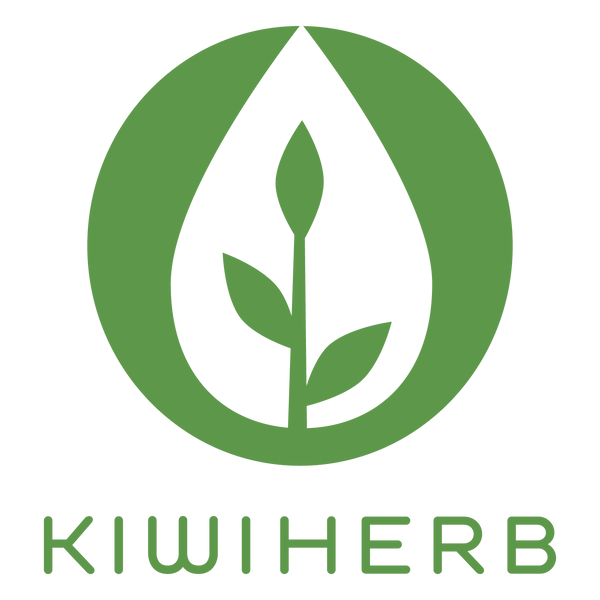
Growing Medicinal Herbs: an Interview
Tim Chamberlain is the man behind Harts Creek Farm in the Canterbury region of New Zealand’s South Island. Tim has farmed organically for over 30 years, and is responsible for a variety of crops on his 300ha of organically certified land. Aside from foods, one of his main crops is organic Echinacea pupurea which is grown for Kiwiherb.
Visiting Tim and his family at their farm in late summer at the height of the Echinacea flowering season is a wonderful experience. Fields of tall purple Echinacea blooms sway in the breeze for as far as the eye can see, right up to the shelter belts planted at either side of the paddocks.
We talked with Tim about organic farming, and the particulars of growing and harvesting Echinacea root.
Tim, what are some of the special aspects of the climate and conditions in Canterbury?
“Plants are able to experience four seasons. It’s a maritime climate and very variable. We have good soils here in Canterbury. They have a naturally high level of nutrients. Echinacea requires similar soils to where it’s from, North America.”
“I’m a 4th generation farmer on our farm at Leeston. We have artesian wells, the water is 60-90 years old, it starts in the mountains and slowly percolates under the grounds in Canterbury. It’s an amazing resource that we’ve grown up with. We have three spring-fed creeks which run through our farm. The water is very high quality. Christchurch’s drinking water in untreated. We take it for granted!”
What are some of the differences with organics vs. conventional farming methods?
“We adhere to organic principles of growing, meeting organic standards such as Biogro, the differences are around the herbicides and pesticides and fertilisers which can be used.”
“We have a four year pasture rotation…in the last couple of years we have been bringing onto the farm compost, it’s organically tested for things like pesticide residues. Our aim is to increase the ratio of cropping, with composting its like putting money in the bank that you can take out later. We get a bigger range of elements and trace minerals that we would with bringing in fertilisers. There are less opportunities for quick fixes, things are slower to react to interventions you make.”
Can you tell us about some of the specifics of growing Echinacea?
“My first experience with Echinacea was hearing conventional farmers talk about the high return for Echinacea. They used a pesticide which made it suddenly easy to grow and the money fell out of it. Organic Echinacea is actually a high cost and high risk crop! We’ve had several failures, like when we planted the crop too deeply or carried on with too fewer plants.”
“Our initial seed was from America, and since then we use seed we have harvested off our own Echinacea crop. This year the seed is three years old but still retaining its vitality.”
“This crop [we are out standing in the field] is two months away from harvesting. What we do is we plant the seed in Springtime, it takes 4-6 weeks to come out of the ground. Just before it does we go through with the flame-weeder and it comes out of the ground without any competition. The little plants are out of ground in a weed-free situation. Then we come in with weeding equipment later and try to keep it as weed-free as possible until January, then its vigorous enough to out-compete the weeds. It goes from being a very uncompetitive plant with weeds to a very competitive plant!
It sounds like harvesting Echinacea is even more specialised than growing it?
“Kiwiherb are interested in the alkylamides in the root. We want to harvest before it gets too wet. We harvest every 18 months, planting in October and harvesting in April. A full summer as a seedling and a full summer as an adult plant when it flowers.
At the end of a dry Autumn we go in and remove the top of the Echinacea. We collect the root and use a little machine we invented to knock some of dirt off then the washing and drying is really important.
Thanks Tim for a little bit of insight into the intricacies of growing our precious Echinacea root!
In today’s world of global commerce it is more important than ever to understand where our consumables come from. This ensures that we not only know more about the quality of the product we are buying, but also that we have a real understanding of who our consumer dollar is supporting, and what impact we are having as consumers on our environment. It also makes us appreciate the work and wisdom that has gone into every dose of Echinacea we take!
